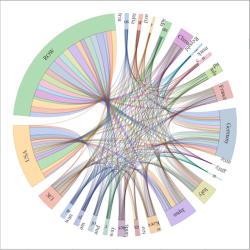Ripple effects in the global economy
Manufacturing is more modular than ever. Ironically, it’s also harder for industries to change sources.

Graphic showing that trade among 24 economies is highly interconnected
There’s something called the mirroring hypothesis, whereby the complexity and modularity of a product is reflected in the complexity and modularity of its supply chains. Similarly, more innovative products are more modularised.
While that pattern is generally the case, and has become more visible than ever via the networked global economy we now live in, that interconnectedness is causing some unintended ripple effects across industries and countries.
It remains a challenge to visualise these ripple effects due to the networked structure of global value chains (GVCs), since GVCs involve thousands or even millions of interconnections, each representing how one product produced by one industry in one country becomes an input into another product in another industry in another country.
When those input-output pairs occur at scale, they eventually feedback into the ‘beginning’ of the cycle, by what is called circular flows. For example, raw materials can flow into high-tech products, just as high-tech products can flow into the natural resources industry.
But how can we make it possible for human minds to see and make sense of all those interconnections and circular flows without oversimplifying or overcomplicating GVC analysis?
Read more and see visualisations of 22 manufacturing industries in the recent Technical Note by Martin Bliemel (TD School) and Brian Wixted (University of Saskatchewan), published by the Centre for the Study of Science and Innovation Policy.
